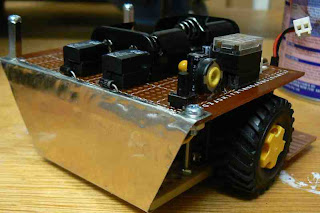Before I started the search I had a few requirements
- free if possible. I'm just not doing this enough to justify the cost of software.
- recent. No 15 year old dos programs running in a dos emulator.
- ease of use over functionality. I have limited time to learn and use a software package. I don't see my designs ever being that esoteric so a simple program which is easy to use is better than the "greatest software package ever" (tm) which needs a full week course to learn.
- a CAD program that feeds into a PCB generation program, and the PCB generation program produces industry standard layouts (ie layouts that I can send to a PCB manufacturer).
As TinyCad is designed to a simple program there were no tutorials that I could find. However the in program help was a tutorial by proxy and covered enough to make getting started easy enough. The interface was extreme intuitive (always a mark of a successful interface design) and very clean. Simplicity of design with easy of use. A rare combination in freeware land. A quick summary...
The Pros
- small install (5mb)
- very intuitive and easy to use
- good design checker (to pick up those human errors)
- ability to generate netlists (in multiple formats include those used by Freepcb), parts lists and export designs as images.
- very easy to create new components and add them to the component library
- good support forum
- runs on linux under wine
Now for the cons...
- limited default library. A limited library of components (no 555 chip??). That is offset by the ease to make new components (which is going to be mandatory for most people).
- default library could do with a clean up. Duplicates of some components in the different libraries.
- resize of components all but broken. You can resize components quite easily. However once that is done they don't (unless you are very lucky) match up to the underlying component grid. This means you will connect components together, save a design, reload it and all those links will exist (ie lines joining components) but won't actually be connecting said components. The design checker will pick these up but the first time it happened it was a case of WTF. The moral here is never resize components. If you want one smaller/larger best to create anew component of the desired size. It's annoying the first time but after you are aware of the problem I don't see it as a major issue.
A good circuit schematic design tool which met and exceeded all my requirements. After taking half an hour to ready through the help I was making my first circuit without issue. Fell down the resize of components problem but a quick search on the forum resolved that issue. Within a few hours I had not only created a number of new components for the component library but had also completed the circuit design of Nudgebot. The end result was a semi professional looking schematic that I could put up on the web for others to enjoy.
Now to check out Freepcb...








